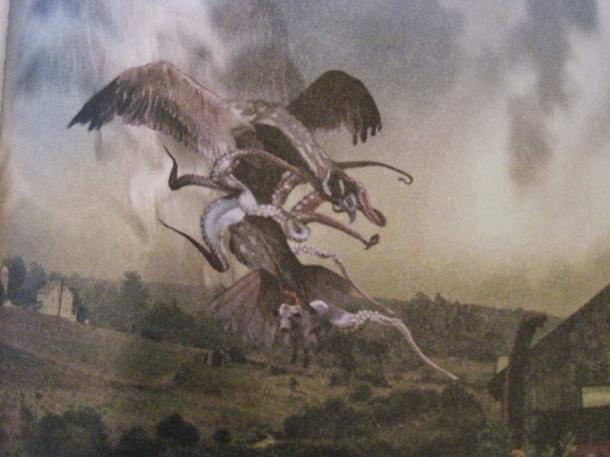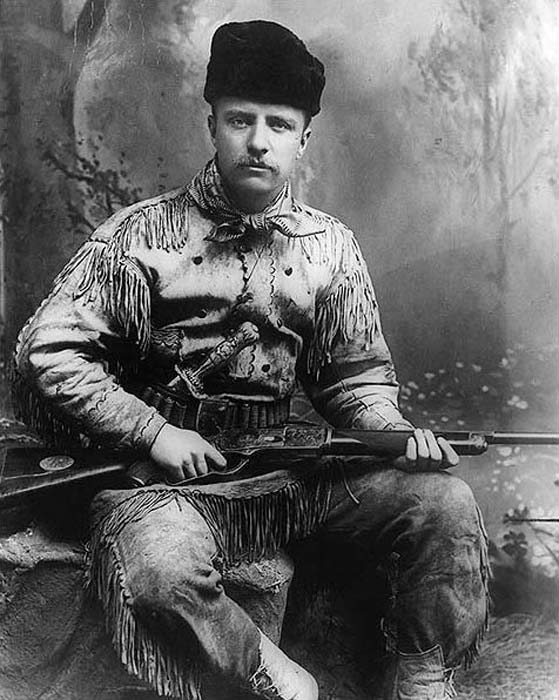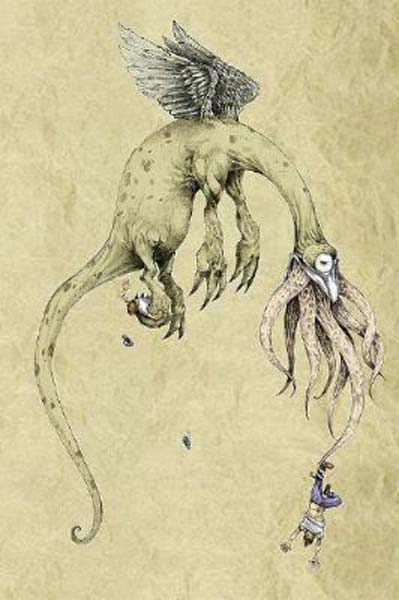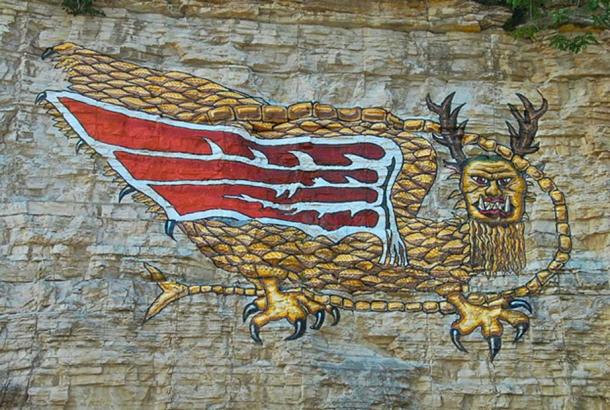The Snallygaster is a mysterious unknown cryptid that is said to look like a dragon. The legend of the beast originated with German immigrants that settled in Frederick County in Central Maryland. Maryland is a Mid-Atlantic state that’s defined by its abundant waterways and coastlines on the Chesapeake Bay and Atlantic Ocean. It is a neighboring state west of New Jersey.
The history of Germans in Baltimore began in the 17th century. This area was first settled by German immigrants beginning in the 1730’s. The dragon-like beast allegedly inhabited the wooded hills surrounding Washington and Frederick Counties in the State of Maryland, USA.

Snallygaster. ( Harry Potter Wiki )
The etymology of “Snallygaster” is actually a mispronunciation of the German word Schnellegeister, which is itself a corruption of the German term “schnelle geist,” or “quick spirit.” The German immigrants were said to have a morbid fear of it. German immigrants were known to have painted red hexes on their barns to ward off evil spirits, and they followed this same tradition when they arrived in Pennsylvania and Maryland.
What Does a Snallygaster Look Like?
There is some historical information about the Snallygaster and it’s one of the stranger gray-area crypto-zoological creatures in the history of the United States. The eyewitnesses who purportedly saw it generally described the monster as a dragon-like reptile with huge wings, a large beak, and sharp claws – specifically “claws like steel hooks.” Reportedly, this creature made screeching noises “as loud as a train whistle” and had a taste for human blood.
Sightings
In the late 1920s and early 1930s the monster caused a sensation in Frederick County, Maryland. Jason Burns, a Snallygaster researcher, wrote an essay on the creature based upon old historical newspaper articles about it. The old newspapers gave better information on its appearance, describing it as a bloodsucking dragon-like beast with wings, claws, tentacles, fur, horns, and a long reptilian tail. It is said to look like a green dragon with scales and wings.

A Snallygaster. ( Gettysburg Ghosts )
It also apparently had a horrible sulfuric smell and a bloodcurdling roar. The earliest stories claim that this monster sucked the blood of its victims. A group of lumberjacks claimed to have come upon one of the creature’s nests, which was perched on a high cliff and contained an egg “big enough to hatch a horse.”
Older stories about the Snallygaster say that it lived in caves. Many of these old accounts describe a foreboding scenario of a terrifying flying monster diving like a predator, attacking from the skies, and snatching up children and livestock. This is exactly what the Thunderbird was said to have done according to many of the Native American tribal oral folktales that have been handed down from generation to generation.

A Haida double Thunderbird. ( The Commons )
Fake News
Weeks after the Jersey Devil’s visit to New Jersey in January 1909, reports started coming in saying that people had seen the Snallygaster flying monster in Frederick County in early February 1909. The Cumberland Evening Times reported the first sighting of the cryptid in Middletown in 1909. The story was also carried prominently in Middletown’s Valley Register, a weekly newspaper, for about a month.
In the early issues, the flying beast seemed to be everywhere, New Jersey, West Virginia, and Ohio. Allegedly it created quite a stir in New Jersey, where its footprints were first discovered in the snow. The Snallygaster story was kicked off by the front page banner story of the Middletown Valley Register on Feb. 12, 1909.
It was a sensational story, hot off the press…but it was a fake story. The publisher and editor of the Middletown Valley Register, George C. Rhoderick, and a journalist named Ralph S. Wolf, revived the Snallygaster story to boost circulation of their newspaper with a series of terrifying articles about the creature that are said to have even caught the attention of Teddy Roosevelt.

The story was picked up by many newspapers. ( cryptochristy.com)
Thomas C. Harbaugh, of Casstown, Ohio, wrote a letter to the Valley Register in early 1909, telling of a strange beast that flew over him making terrible screeching noises, and mentioned that it was coming in their direction. Harbaugh described it as having two huge wings, a large horny head, and a tail twenty feet long. Harbaugh wrote under various pseudonyms as well as under his own name. However, it turns out that Harbaugh was a personal friend of Rhoderick and was in fact born and raised in Middletown, Maryland, making this another fake story.
Fooling a President
A great deal of publicity surrounded this string of appearances, and then the Smithsonian Institution offered a $100,000 reward for the beast. Rhoderick and Wolf helped fan the flames to spread interest in their story, as they also pleaded their readers to remain calm. News of the attacks grew, which got the attention of the Whitehouse. The Snallygaster rampage was so prolific and terrifying that it attracted the attention of President Theodore Roosevelt, who allegedly planned to kill and mount the beast for display in the Smithsonian Institution in Washington, DC.
President Theodore Roosevelt reportedly considered postponing an African safari to personally hunt down the beast. Soon other papers jumped on the Snallygaster bandwagon, the Baltimore Sun published articles, as did the Washington Post. As scrutiny increased, more pressure came to catch or photograph the monster.

Theodore Roosevelt as the Badlands hunter. Theodore Roosevelt is in a hunting suit, and has a carved Tiffany hunting knife and rifle. Photographed by George Grantham Baine in 1885 in New York City. ( Public Domain )
Supposedly, National Geographic was preparing an expedition to capture it on film. The notoriety lasted for nearly 30 days, until the fan fair of the fake lore quietly died out, perhaps because of the heat from the Whitehouse for scaring the public with fake stories. But the creature was still being seen occasionally by people whose stories helped keep the legend of the Snallygaster alive.
More Stories Emerge
The Snallygaster was said to have been seen flying over South Mountain from Middletown and was first seen by Charles F. Main in the vicinity of Braddock Heights. Mr. Main was a Middletown resident and ice cream entrepreneur. Main claims that he spotted the creature in November 1932, 23 years after the first sighting, when he was returning to Middletown from Frederick early one morning. Main said he saw the creature flying no more than 25 feet (7.62 meters) from the ground. He said its wing spread appeared to be between 12 and 14 feet (3.66 -4.27 meters). At times it threw out long streamer-like arms similar to an octopus, but it would draw them in again. Perhaps it had an octopus in its mouth.

A Snallygaster. ( Tyler’s Cryptozoo )
The Snallygaster, he added, changed color several times, first appearing as black and then white. If this story was really true, the only thing that I can imagine is that it was black and glistening in the sun. Earlier sightings were reported in Maryland newspapers, going as far back as 1906, when one was seen near Frederick. In 1948, the Snallygaster was seen again, soaring above the spires of Westminster, Maryland.
Searching for Answers
Searching for answers, the best solution to resolve the identity of the Snallygaster is the examination of the oral history of Native American legends. The description that Jason Burns has mentioned helps to identify the creature by saying that it has a long tail and horns, which matches the description of the Michi-Peshu and the Piasa, which I now believe to be the same creature. The Michi-Peshu was called the underwater panther. But horned serpents appear in the oral history of numerous Native American cultures.

Image of Underwater Panther, from the National Museum of the American Indian, George Gustav Heye Center library. ( Public Domain )
They referred to it as a fierce underwater panther , named in their native Ojibwe language as the Michi-Peshu. It’s one of the most important of several mythological water beings among many indigenous peoples of the Northeastern Woodlands and Great Lakes region, particularly among the Anishinaabe tribe.

Canoe (top left), Michipeshu (top right), and two giant serpents (chignebikoogs), panel VIII, Agawa Rock, Lake Superior Provincial Park, Ontario, Canada. (D. Gordon E. Robertson/ CC BY SA 3.0 )
The legend of the Piasa comes from the Father Marquette and Louis Jolliet expedition down the Mississippi River on May 17, 1673. The Menomonee Indians endeavored to dissuade them from their enterprise, saying that there were ferocious tribes on the great river, some of whom are at war and would kill any stranger; and also saying that horrible monsters and demons would endanger their lives.
They told Marquette that the river was very dangerous when one does not know where there are difficult places and that it was full of horrible monsters (Unktehi), which devoured men and canoes together; that there was even a demon, heard from a vast distance, which barred the way and swallowed up all who ventured to approach it; and finally they said that the heat was so excessive in the area that it would inevitably cause death. Moreover, there was the scary demon Piasa Bird, a Native American dragon depicted in one of two murals painted by Native Americans on bluffs above the Mississippi River.

A modern reproduction of the “Piasa Bird”, on the bluffs of the Mississippi River in Alton. Wings were not described in Marquette’s 1673. (Burfalcy/ CC BY SA 3.0 )
Comparing the Michi-Peshu to the Piasa shows remarkable similarities, and the physical features of these two monsters aptly applies to the description of the Snallygaster as well. My humble opinion is that the Snallygaster is real and that it’s the Michi-Peshu/Piasa.
Top Image: Dwayyo vs Snallygaster. Source: Viergacht/ Deviant Art
By Steve Pearse
Updated on May 4, 2021.
Steve Pearse is the author of the book Earth is Our Planet, Too!, which is available for purchase on Amazon.
Related posts:
Views: 0
 RSS Feed
RSS Feed

















 May 5th, 2021
May 5th, 2021  Awake Goy
Awake Goy  Posted in
Posted in  Tags:
Tags: 
















